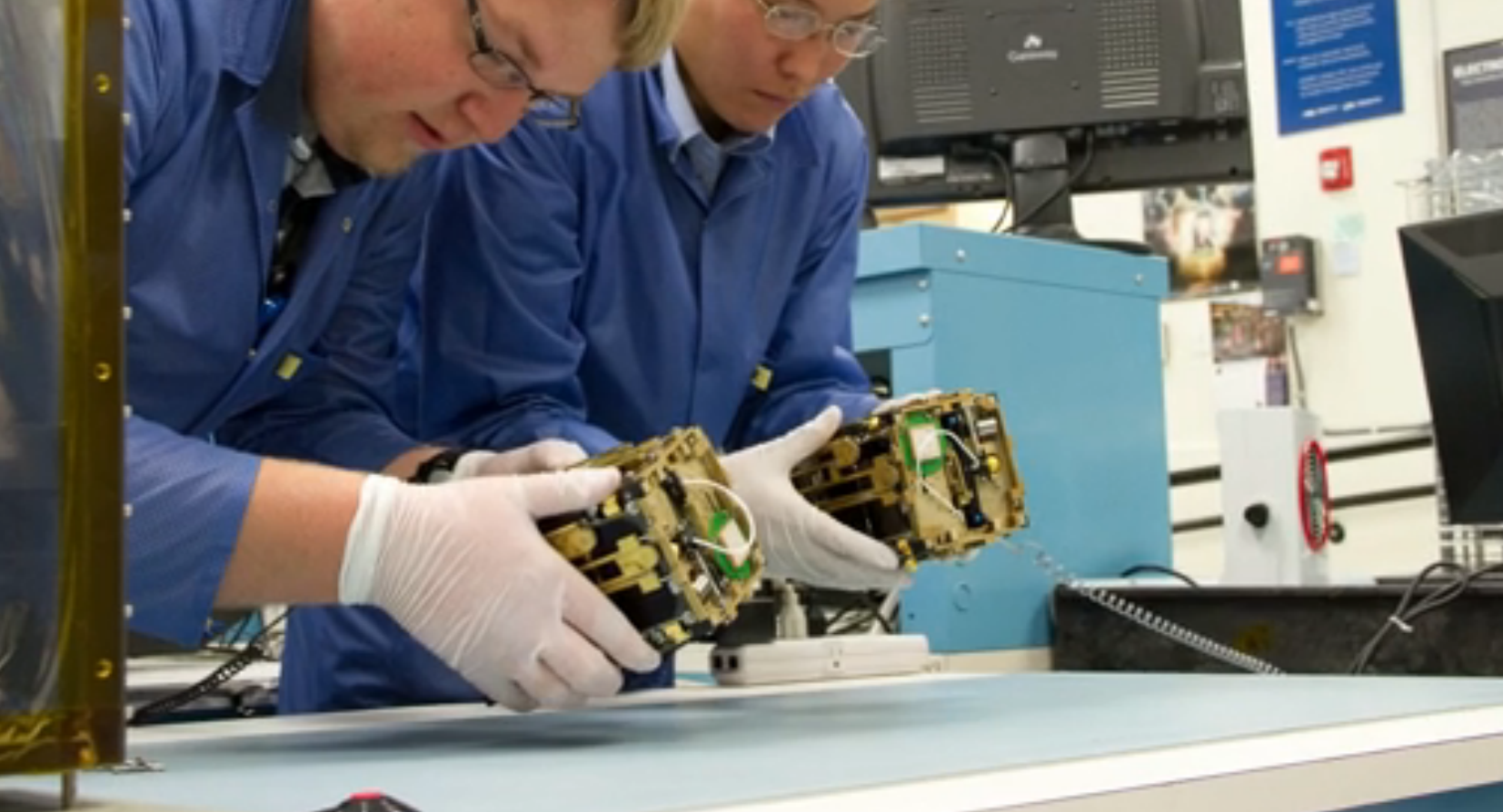News | June 12, 2013
Just 5 questions: SmallSat technology

Source: NASA
By Holly Shaftel,
Editorial Assistant and Social Media Specialist
NASA Jet Propulsion Laboratory
Everything is getting smaller these days—phones, websites, dogs, and now satellites.
A "SmallSat" is a spacecraft that weighs less than 180 kg (about 397 lbs). Many of them fall into the "CubeSat" class, which is 10 cm (about 4 in) on a side and weighing no more than 1.33 kg (about 3 lbs). (Editor’s note: A CubeSat is about the size of a small Kleenex box.)
Dr. Charles Norton is a program manager associate in NASA HQ’s Earth Science Technology Office (ESTO), a JPL principal staff, and the Engineering and Science Directorate point-of-contact for SmallSats/CubeSats helping to take Earth-orbiting satellite technology in innovative directions.
1. Where did the idea of SmallSats come from, and what are JPL's plans involving them?
The development of SmallSats dates back to the 1970s. The idea of a CubeSat class spacecraft, however, originated in 1999 when Prof. Jordi Puig-Suari of Cal Poly San Luis Obispo and Prof. Bob Twiggs of Stanford University proposed standards to promote student project development and to enable regular, safe access to launch vehicles and space.
There are nine active JPL CubeSat science and technology efforts selected for launch opportunities between 2013-2016, and additional missions are in development. JPL’s plans will focus on innovative science and technology for Earth and deep space observations.
2. Can you tell us about some interesting and creative applications of CubeSats so far (and upcoming)?
Most CubeSats launched to date served educational objectives. Today, however, many are pushing boundaries in science and technology. An interesting example is NASA's NanoSail-D, which deployed a 100 square meter solar sail to test de-orbit capabilities, but the technology could be used for many other purposes including deep space propulsion. Scientific measurements are also advancing. Utah State University’s Dynamic Ionosphere CubeSat Experiment (DICE) consists of two identical spinning CubeSats performing space weather experiments related to Earth's ionosphere [the region about 50 to 250 miles (80 to 400 km) above Earth's surface].
Going forward, investigators are becoming more ambitious. Within JPL, the GRIFEX mission will test new detector technology relevant to future missions that will study the composition of Earth's atmosphere. The ISARA CubeSat will demonstrate new antenna technology with the potential to improve CubeSat communication bandwidth 100-fold. We are also developing the INSPIRE CubeSat, which will demonstrate first-of-a-kind capabilities for performing CubeSat science and technology validation in deep space.
3. What advantages and disadvantages do small satellites have compared to larger ones?
The advantages are lower cost, a rapid concept development-to-launch process, student engagement and education, creativity in mission concept design (such as constellations for greater coverage), and the capability to advance new technologies. And, in some instances, they can provide unique science observations.
Small satellites allow for greater risk, but this must be managed as for any flight project. For CubeSats the disadvantages, in general, are measurement-specific. There are very important observations that are simply not compatible with small platforms. "Shorter operational lifetime" is sometimes seen as a disadvantage, but there are some CubeSats that have been in operation for nearly 10 years.
4. Do you think small satellites will eventually replace larger ones?
In general, no. Small satellites will provide additional science when flown as part of a larger primary mission, especially as SmallSats contribute to beyond Low Earth Orbit (LEO) investigations. I foresee various classes of spacecraft performing collaboratively based on primary science and technology validation objectives.
5. Are there any CubeSats in operation?
Many CubeSats in operation have been launched both within the U.S. and internationally. Universities, industry, and government organizations developed them over time. Their orbital trajectories are being tracked, but an exact number in operation is hard to assess. There will be roughly 100 new CubeSats launched in the 2013-2014 timeframe alone.
Most CubeSats are designed to last at least one year while satisfying a 25-year de-orbit requirement. While past lifetimes have been limited, due to failures, most CubeSats launched within the last few years are still operational.





